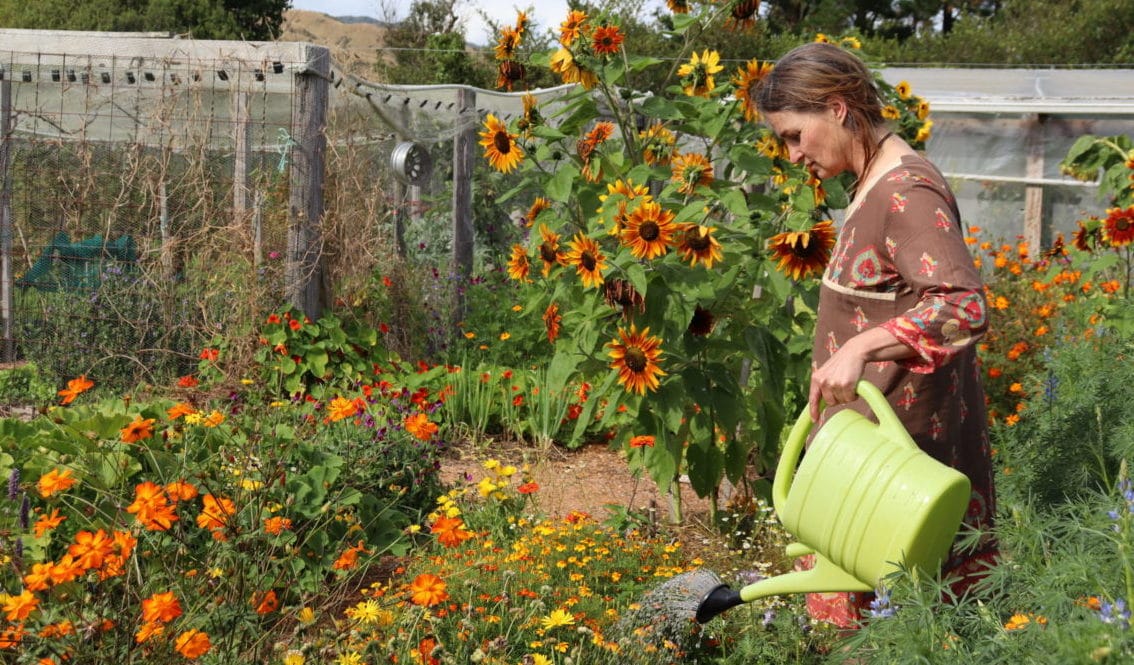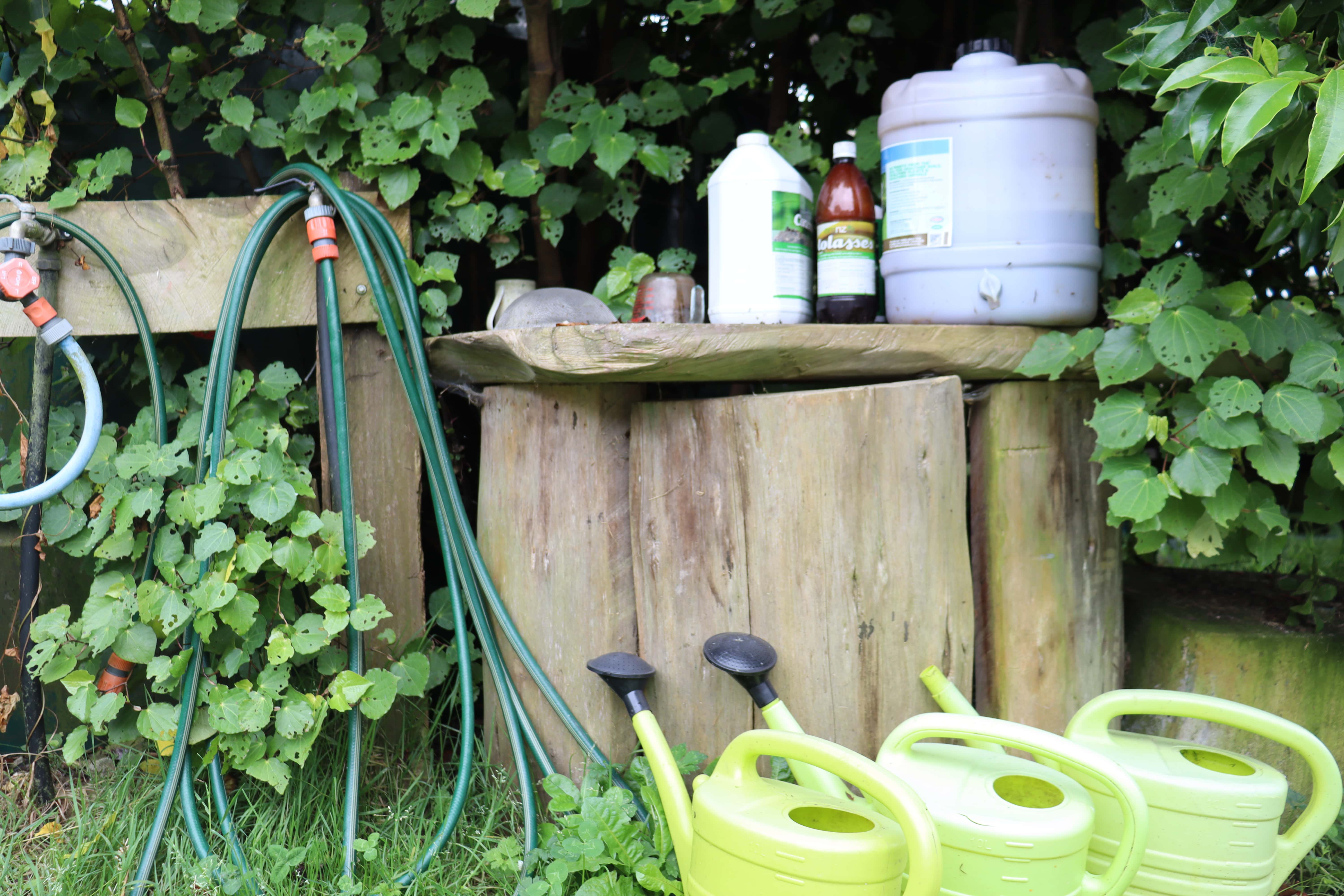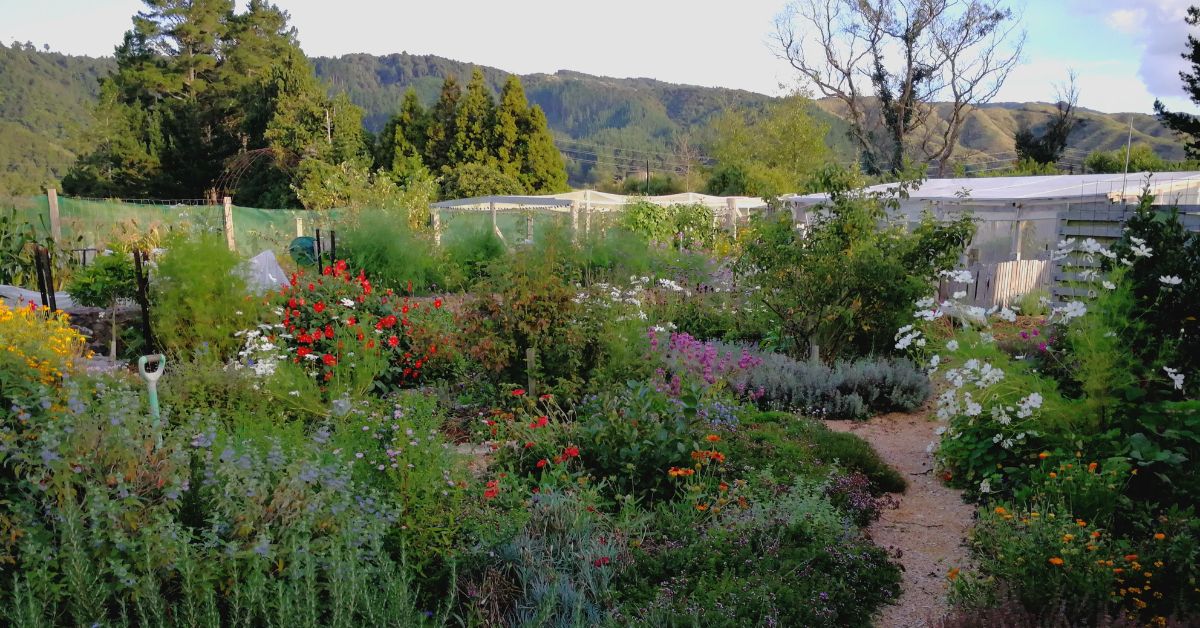My 2 Ingredient Biological Liquid Feed


Liquid feed is awesome tonic support for the food garden, and this 2 ingredient biological brew in particular, because its alive! It's a brilliant one size fits all that has a gently transformative effect on citrus, vegies, roses, berries, fruit trees, the chook yard, pasture, even compost piles.
As long as the soil is up to scratch (homemade compost hello!) the scene is set for your biological brew to slowly and steadily improve your garden. As well as building soil and nourishing plants - an army of beneficial organisms literally leaves no room for disease causing pathogens.
The ingredients

Two ingredients, as promised - one biological (living) ingredient + one packed lunch ingredient. The packed lunch is food for the biology until it establishes itself within the web of life in your garden and can find its own dinner.
- Biological ingredient. Either use EM Garden 1 or your own vibrant, homemade activated compost tea. One or the other - you don't need both.
- Packed lunch ingredient. Fresh worm liquid or liquid seaweed or liquid fish. Molasses is an optional extra or in the event you've none of the others, use one tablespoon per watering can, dissolved first.
How to mix your brew
- Half fill your watering can or back pack sprayer with good, clean water
- Add both ingredients, at the recommended dilution rate on the bottle. For a homemade feed dilute at about 1:10, which is 1ml per 10ml water.
- Top up the water, swirling the hose end around as you go, to stir it together nicely.
The importance of good water: A living feed needs a living water like rainwater or spring water. Biology cannot thrive in the presence of chlorine or flouride. Chlorine is the easier of the two to clear out, it off gasses so just fill your watering can and leave it out for a time. Chlorine is also easily and cheaply filtered, Flouride however is not. My only resolution for flouride is to collect rainwater or find spring water and beseech your council to stop flouridating. Flouride is a known biocide and neurotoxin, as you can read for yourself in this 2014, article from world renowned medical journal, the Lancet.
How + when to use

Splash it everywhere - over foliage, leaves, bark, soil - the lot! The best time is in the evening.
- At most use once a week. This suits new gardens, gardens transitioning from artificial fertilisers/ sprays to natural ways, and is a good tonic (not cure) for diseased or pest laden plants.
- Once a month spring through autumn, is a good general go to.
- If everything is growing swimmingly, go for once a season. You'll naturally use less as soil improves because good health will ring out.
Keytimes
- Early spring, as new growths appear, is a prime time to get ahead of disease causing organisms
- Before planting seedlings, saturate the soil which is especially good if using bought compost or your garden is new or not doing so well.
- Boost winter crops for strong growth before soil cools and growth slows
- Enliven compost - pour a bucket of brew over a newly made pile
When soil temps dip below 10°C, biology, like every other living thing, slows right down. So save your time and pennies - stow your watering can and take a break until things warm up again.
Less is more

It's tempting to buy into bigger is better thinking. Be ever careful of the word "more" - it tips your soils out of whack, sends natural processes into a spin and wastes your money. That's why we have a garden giggle and call it the more-on effect.
More dilute + more frequent is more potent by far. Make little and often your garden mantra, and all will be well.
